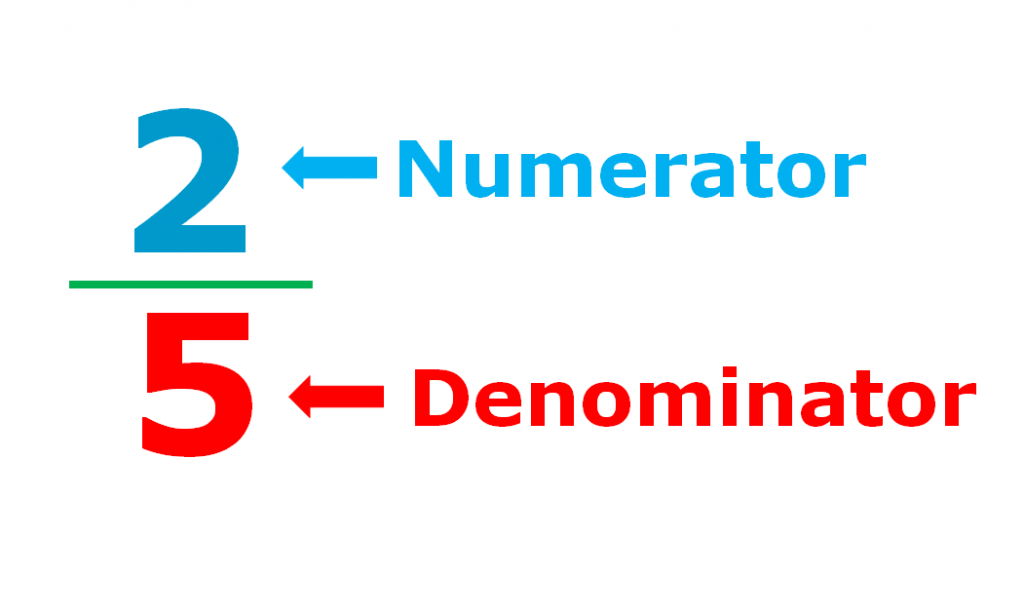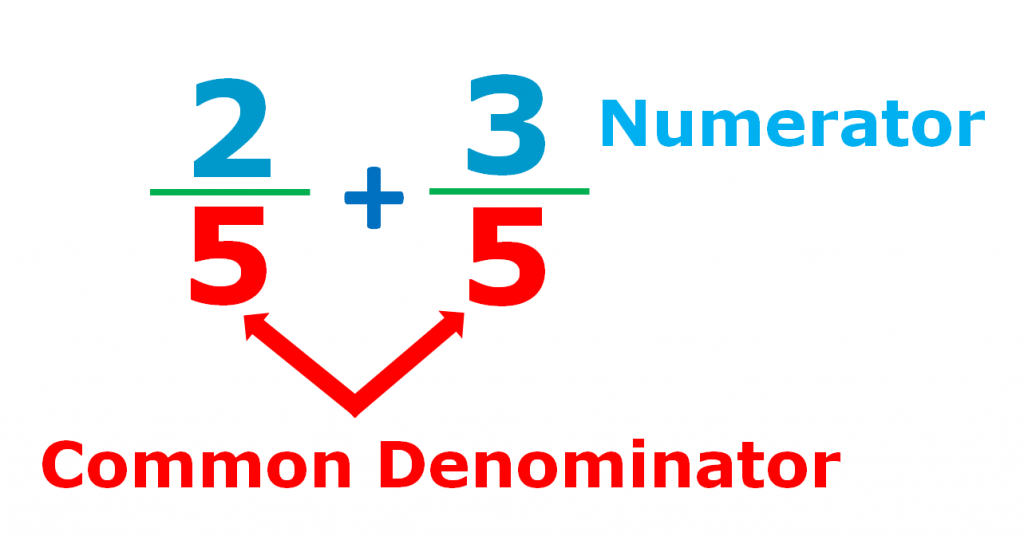Numerator and Denominator – Definition & Examples
Numerator and Denominator
Numerator
In math, the top number of a fraction that shows how many parts we have, is known as numerator.
Denominator
In math, the bottom number of a fraction that shows the number of equal parts of an item is divided into, is known as denominator.

Numerator : Top number of a fraction
Example: In fraction 4/5, 4 is numerator.
Denominator : Bottom number of a fraction
Example: In fraction 4/5, 5 is denominator.
These two numbers are separated by a horizontal or slanted line
The fraction 4/5 has top number is 4 and bottom number is 5, thus the numerator is 4 and the denominator is 5.
The symbol “/” is known as the fractional bar.

The fraction 2/5 has top number is 2 and bottom number is 5. Therefore, the numerator is 2 and the denominator is 5.
Example: In fraction 5/4, 5 is numerator, and 4 is denominator.
Variables are also expressed in the same from as x/y, a/b, m/n, p/q, r/s, g/h etc. Where y, b, n, q, s, h are denominators respectively.

When we pronounce fractions in english, we always speak numerator first, and pronounce it exactly as we pronounce the number for example fraction 4/7 has the numerator 4, is pronounced “four”, or in 36/27 the numerator 36, is simply pronounced as thirty six, and then speak denominator.
The denominator represent a part of a whole or any number of equal parts.
For example, 1/2 is one part, out of two equal parts.
The denominator of a fraction shows how many parts a whole is broken into. Whole may be a whole apple, orange or a whole anything. If denominator of a fraction is 3, it means that the whole is broken up into 3 equally sizes. if denominator is 12, it means the that the whole is broken up into 12 equally sizes.
If numerator is greater than denominator, for example(fraction 8/5). The denominator 5, shows that a whole is divided into 5 equally sized parts, and numerator 8, shows that we have 8 of those parts. So 5 parts make a whole and we have 8, then we must have a whole object plus 3 more of equally sized parts.
So, 8/5 is equivalent to 1 3/5 also known as “one and three-fifths” and we now know that a fraction whose numerator is greater than its denominator represents a number that is greater than 1.
One more example, The denominator 3, shows that a whole is divided into 3 equally sized parts, and numerator 7 shows that we have 7 of those parts. So 3 parts make a whole and we have 7, then we must have 2 whole object plus one more of equally sized parts.
So, 7/3 is equivalent to 2 1/3 also known as “two and one-third”
Example : If one piece of a whole object divided into two equally sized parts it means fraction is 1/2. Similarly, the fraction 23/45 means twenty three pieces of a whole object that is divided into forty five equally sized parts,
Note: When the numerator of a fraction is greater than the denominator, then the value of the fraction is greater then 1, and if the numerator of the fraction is less than the denominator, then the value of the fraction is less then 1.
Common denominators
When two or more fractions has same denominators they are known as common denominators.

In above example fraction 2/5 and 3/5 has same denominator 5, so these are common denominators.